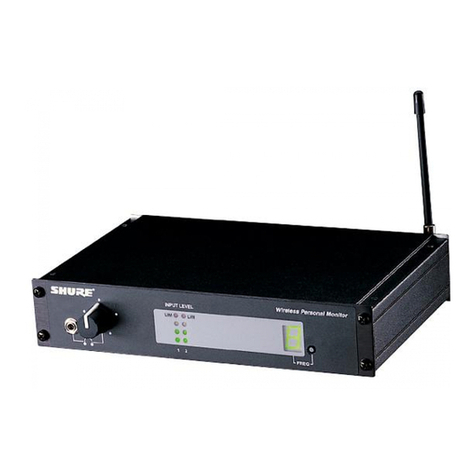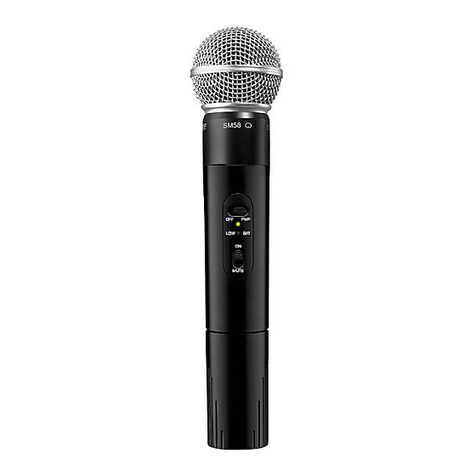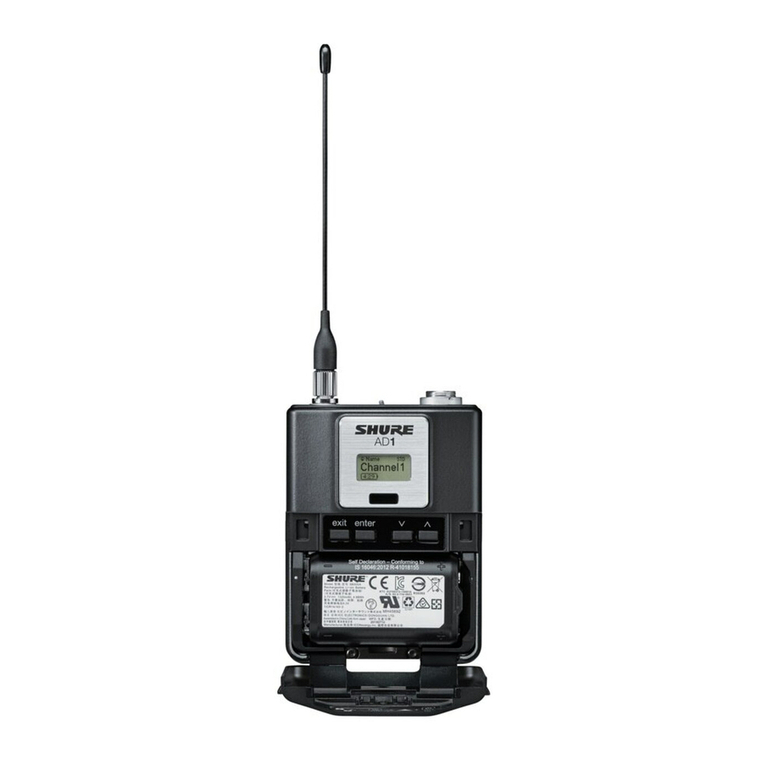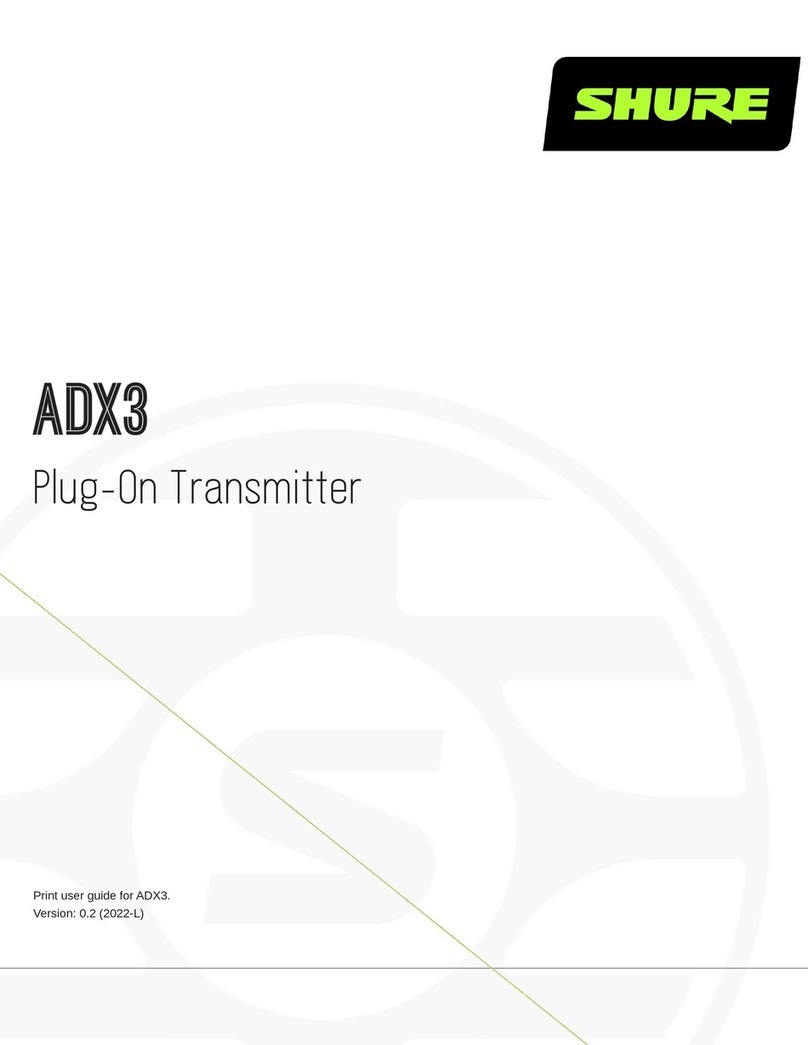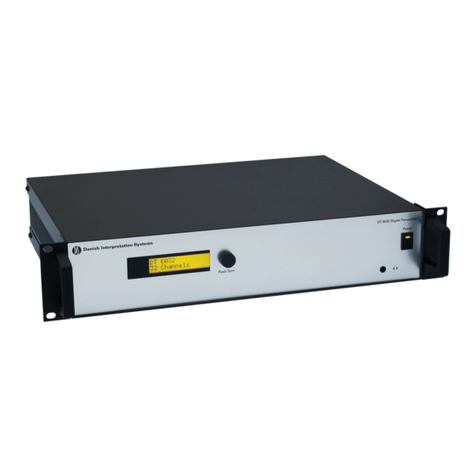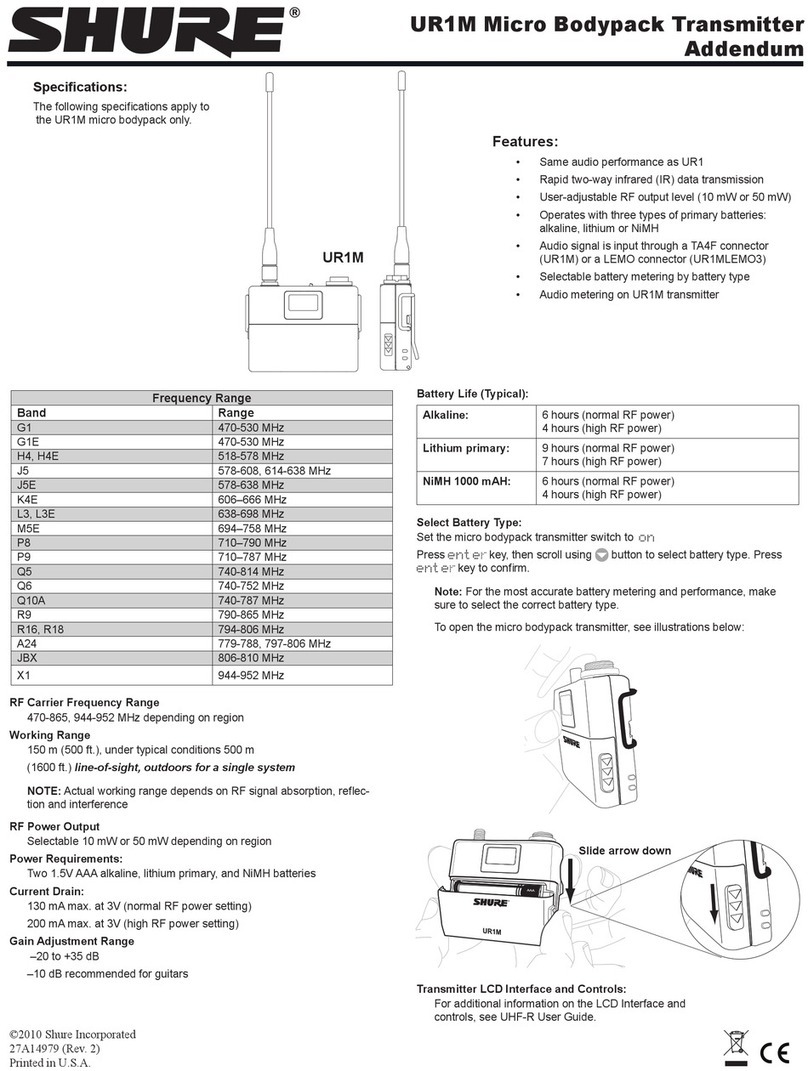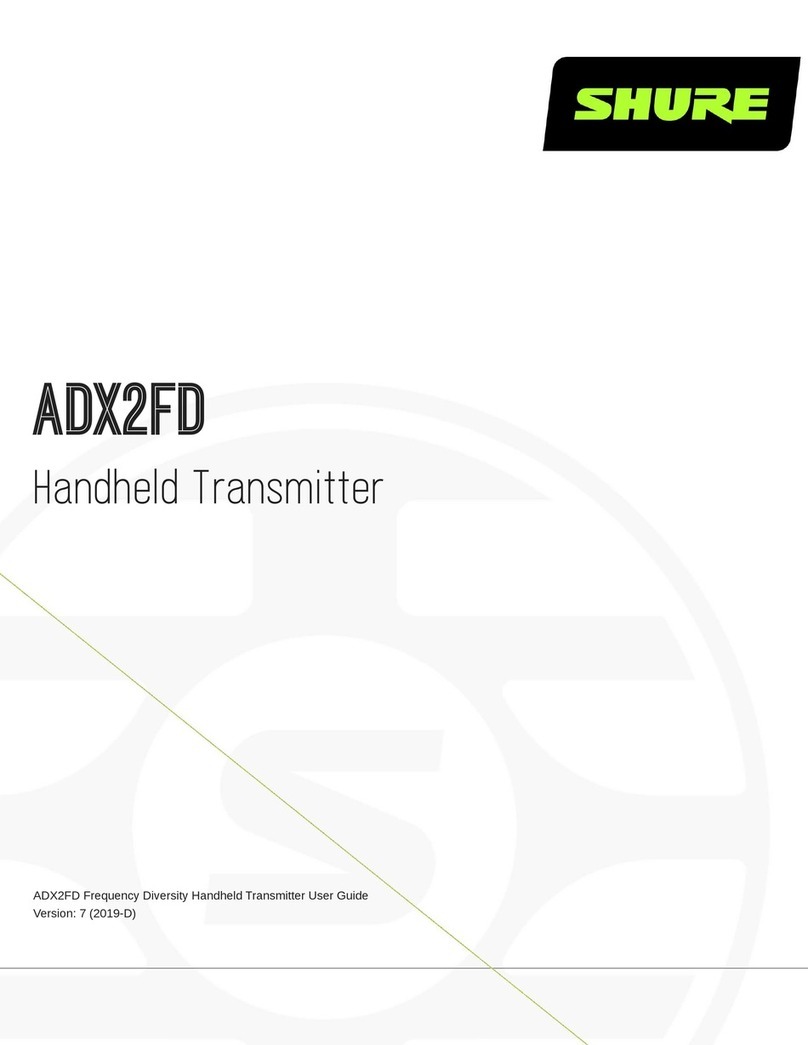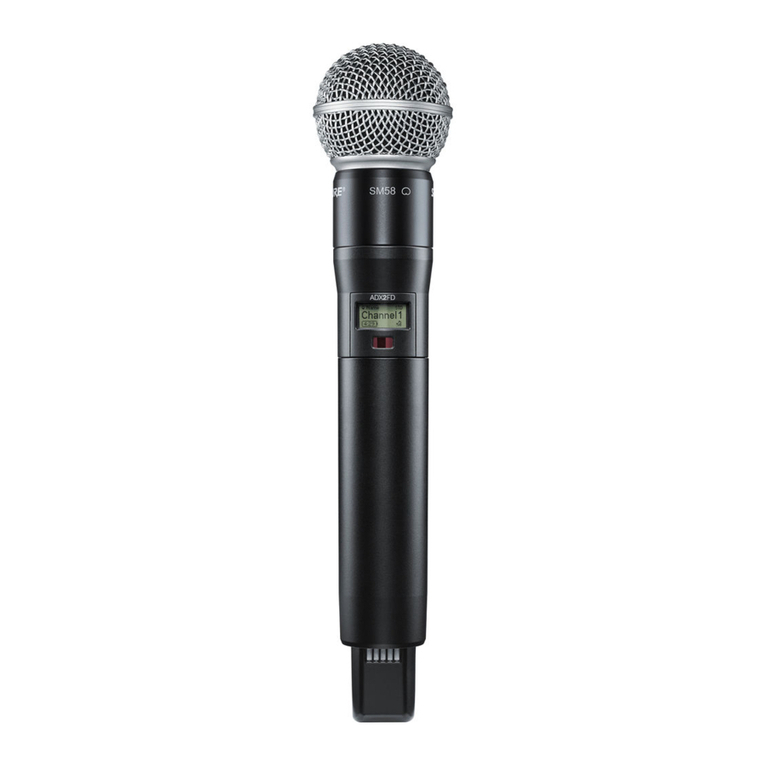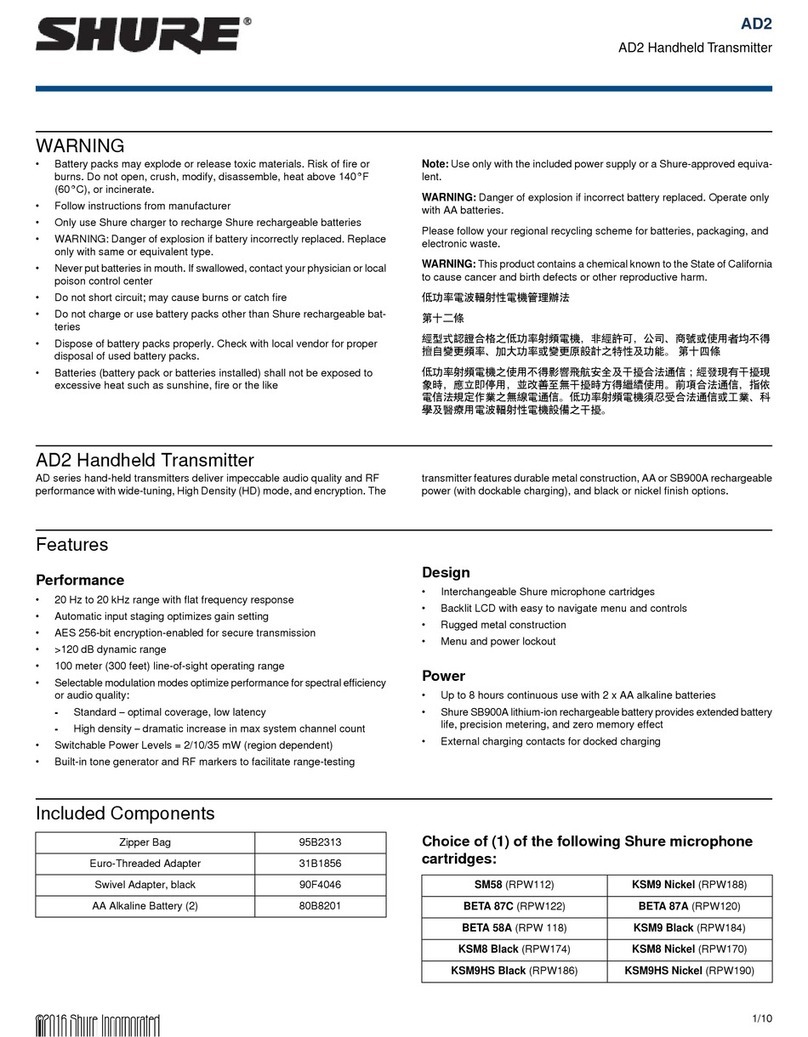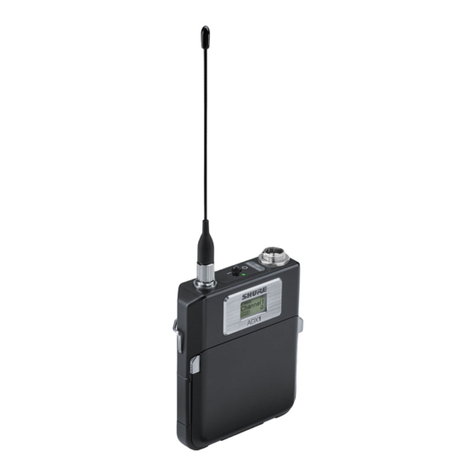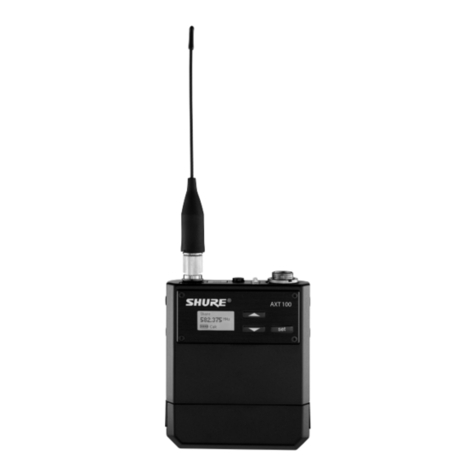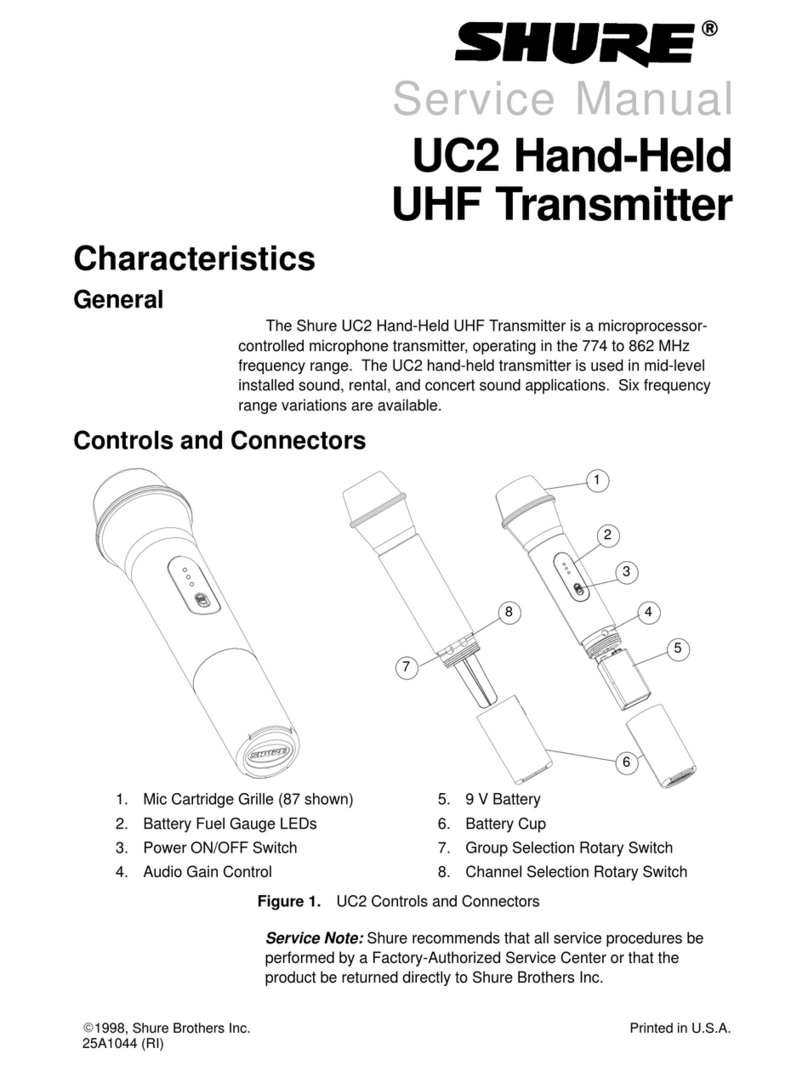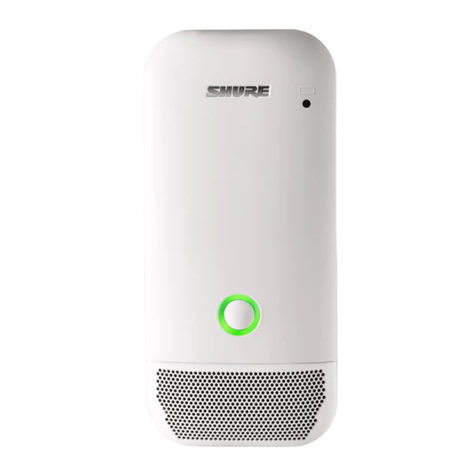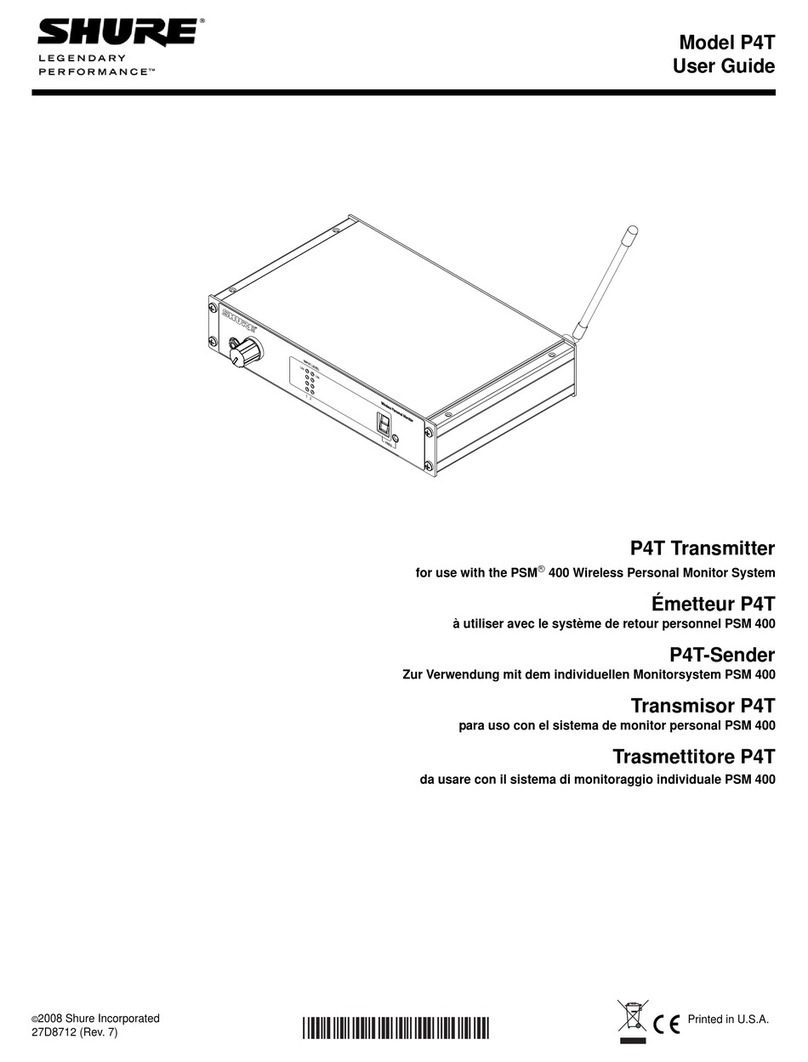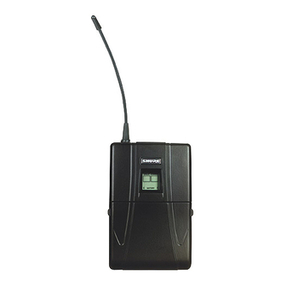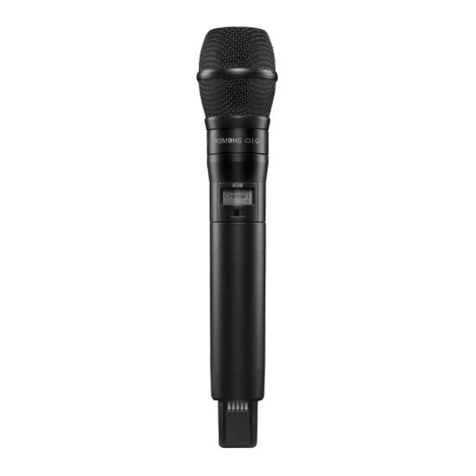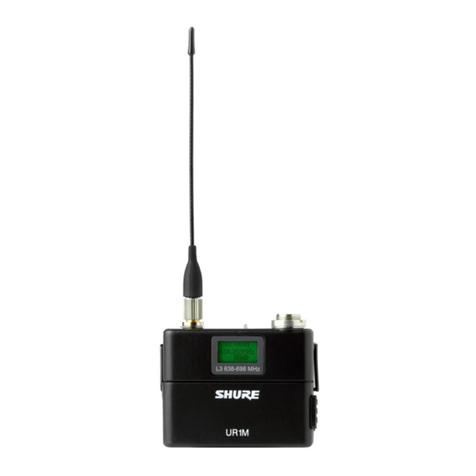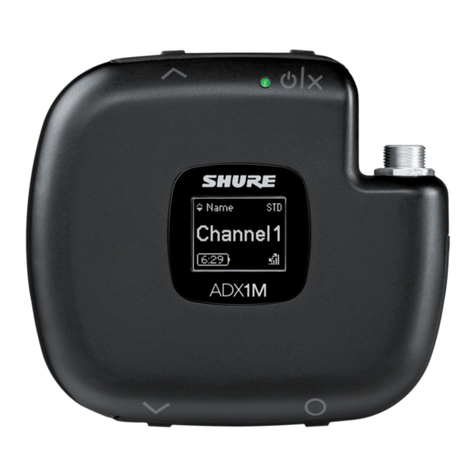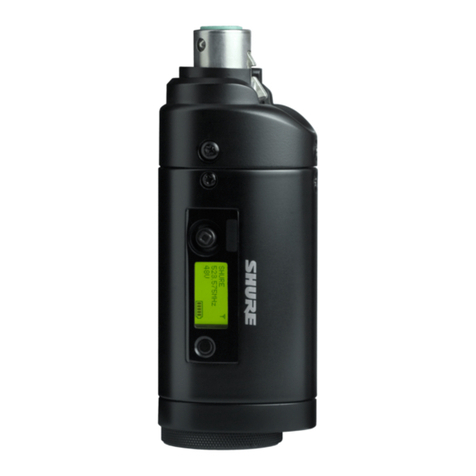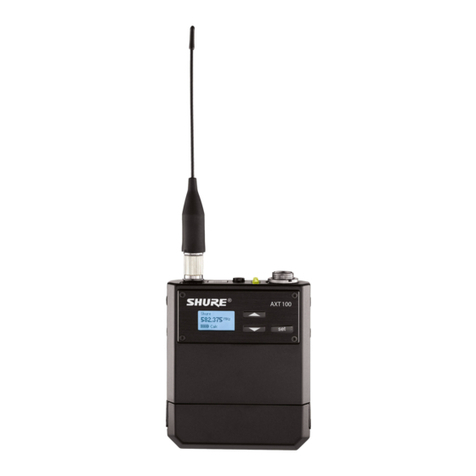Shure T1 Body-Pack Transmitters
3Characteristics
25C1016 (CC)
L209, diode D201, capacitor C214, and capacitor divider C224 and
C230.
Frequency and Temperature Stability: To ensure frequency sta-
bility despite changes in the battery voltage, regulated 5 Vdc bias is ap-
plied to the varactor diode and to the base of Q201. Temperature com-
pensation is provided by C224, C230, and C214.
Tuned Circuits
Stage 1: The collector circuit of Q201 is tuned to the third harmonic
of the oscillator frequency (approximately 60 MHz) by L205, C225, C234,
L202, C217, and C233. (The latter components also form a capacitively-
tapped voltage divider for matching the signal to the base of Q203.) The
output is double-tuned to provide high-spectral purity. Regulated dc bias
is again employed to minimize changes in loading on the oscillator stage
and to stabilize the drive levels.
Stage 2: Q203 operates as a frequency tripler, with its collector cir-
cuit tuned to the output frequency (for example, 180 MHz). In this case,
L204, C215, C237, C236, L207, C235, and C222 perform tuning and
impedance-matching functions. As in the preceding stage, regulated dc
bias is applied to the base circuit to stabilize the drive level, and the
output is double-tuned to provide spectral purity.
Stage 3: Q204 operates as a tuned amplifier. Resistive loading on
the input provides stability. The output circuit consists of a resonant tank
circuit (L203 and C213) capacitively coupled to a low-pass filter (C219,
L206, and C218). C213 and C219 provide a capacitively tapped voltage
divider for matching into the low-pass filter.
Transmitter Output
Transmitter: This can deliver up to +17 dBm (50 mW) to the an-
tenna. No user adjustment permits this value to be exceeded. The unit
should be powered exclusively by a 9 Vdc dry battery (an alkaline type,
such as a Duracell MN1604, is recommended).
Voltage Measurements: With 9 Vdc applied to the unit, the fol-
lowing voltages should appear at the terminals of the output transistor;
SVc = 8.88 Vdc
SVb = .450 Vdc
SVe = .473 Vdc.
SBase current = .29 mAdc
SEmitter current = 21.5 mAdc
SCollector current = 21.8 mAdc
SPower input = 183 mW
The output power is +16.5 dBm (44.7 mW) into a 50 Ωload, at a fre-
quency of 169.445 MHz. At the minimum acceptable battery voltage of
6 Vdc, the final collector current drops to 15 mAdc and the output power
declines to +13.9 dBm (24.4 mW).
